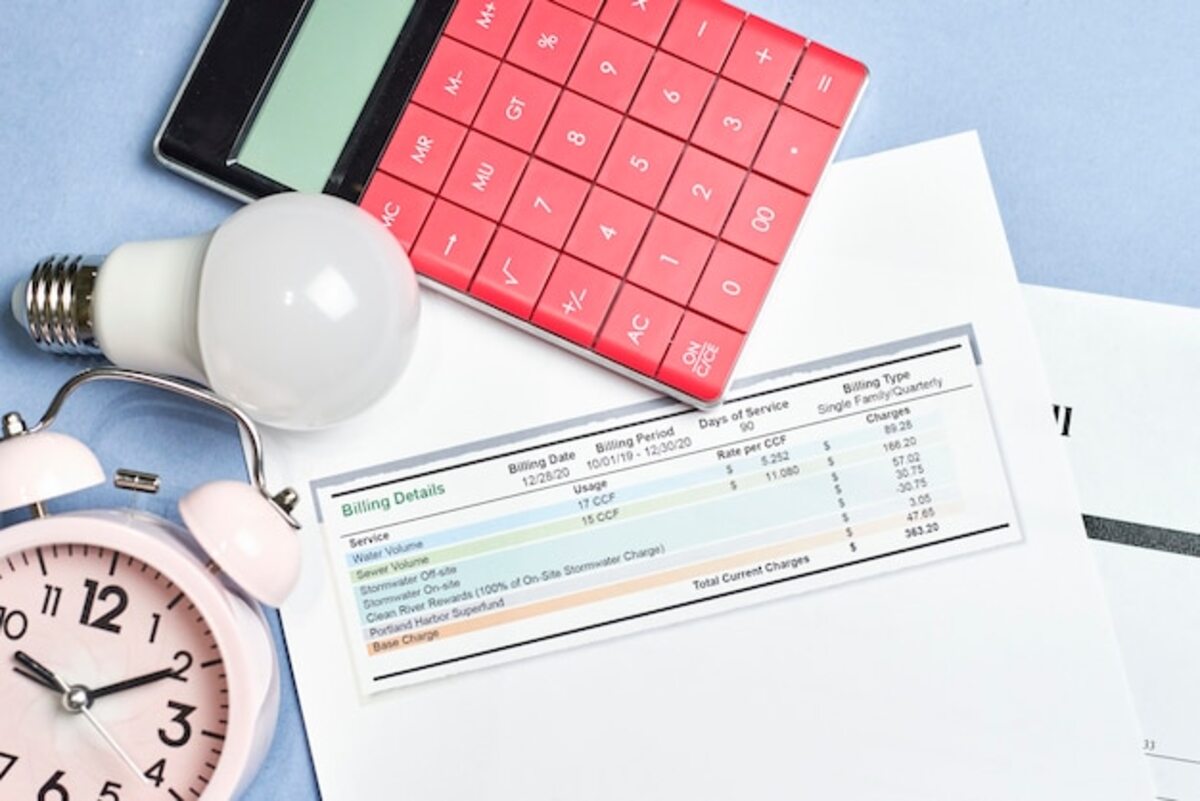Optimize your cash flow with smart planning.

Optimizing your cash flow is essential for any business that wishes to grow and thrive. Smart planning in tax management and expenses not only helps you keep your finances under control but also maximizes your available resources. In this article, we will explore effective strategies to improve your cash flow through proper tax planning and efficient cost management. Discover how each decision can make a difference in the financial health of your venture.
The importance of cash flow in your business
The importance of cash flow in your business lies in its representation of a company's ability to meet its financial obligations and operate efficiently. Positive cash flow ensures that you can pay your suppliers, meet payroll, and maintain daily operations without setbacks. Without proper control over cash flow, even the most profitable businesses can face serious financial problems, which could lead to hasty decisions or cuts that affect their growth. Therefore, understanding how to manage this crucial aspect is essential for the long-term sustainability of any venture.
Additionally, well-managed cash flow provides the flexibility needed to invest in opportunities that may arise unexpectedly, such as new projects or infrastructure improvements. This not only allows you to take advantage of key market moments but also helps to build confidence among investors and stakeholders, who value the financial stability of a company. In summary, prioritizing cash flow through smart planning not only helps to avoid financial crises but also opens doors to new opportunities and sustained growth.
2. Strategies for effective tax planning
Effective tax planning begins with a detailed analysis of your business's tax obligations and available deductions. It is essential to know which taxes you need to pay and when, as well as to identify deductible expenses that can reduce your tax burden. Keeping organized records of your income and expenses will allow you not only to meet your tax responsibilities but also to spot opportunities to optimize your cash flow. Considering working with a tax advisor can provide you with a broader perspective on how to legally minimize taxes and maximize benefits.
Another key strategy is to implement an annual fiscal budget that includes both projected revenues and expected expenses. This budget should be flexible and reviewed regularly to adapt to changes in the economic environment or in the operation of the business. By setting clear and measurable goals, you will be able to evaluate your company's financial performance and adjust your strategies as necessary. Additionally, consider exploring tax incentives or government programs designed to support small businesses; this can provide you with additional relief in terms of cash flow, allowing you to reinvest those resources in critical areas for growth.
3. How to classify and prioritize your expenses
Classifying and prioritizing your expenses is a fundamental step in optimizing your cash flow. To start, it is useful to divide your expenses into categories that reflect the different areas of your business: fixed costs, variable costs, essential and non-essential costs. Fixed costs, such as rent or salaries, are those you must pay regardless of sales levels. On the other hand, variable costs fluctuate according to business activity and can be optimized based on business performance. By creating these categories, you will be able to better visualize where your money is going and make more informed decisions about which expenses you can reduce or eliminate.
Once you have classified your expenses, it is important to prioritize them according to their impact on the operation and profitability of your business. Ask yourself which expenses generate the most value or return on investment. For example, if an advertising campaign is producing good results, it may be wise to keep it active even if it represents a significant expense. On the other hand, if you identify any non-essential expense that does not contribute to the growth or financial well-being of your venture, consider adjusting it or eliminating it altogether. This prioritization will allow you to direct your resources towards those areas that truly drive the success of your business and thus improve your overall cash flow.
4. Technological tools for financial tracking
In the digital age, technological tools have become indispensable allies for the financial tracking of any business. There are multiple applications and software that allow real-time monitoring of income and expenses, facilitating the identification of patterns and trends in cash flow. Platforms like QuickBooks, Mint, or Xero offer functionalities ranging from the creation of customized reports to alerts about payment due dates, enabling entrepreneurs to have a clear and precise view of their financial situation. These tools not only optimize the time spent on accounting but also reduce the risk of human errors.
Additionally, many of these programs integrate advanced features such as automated bookkeeping and synchronization with bank accounts. This means you can receive instant updates on your cash flow without having to manually enter each transaction. The ability to generate financial projections based on historical data is another significant advantage; this way, you can anticipate potential economic challenges and plan appropriate strategies to face them. Adopting these technologies not only improves operational efficiency but also empowers entrepreneurs to make more informed and strategic decisions to ensure sustainable growth in their businesses.
5. Identification and elimination of unnecessary expenses
The identification and elimination of unnecessary expenses is a crucial step in optimizing cash flow. Many times, companies operate with costs that do not add significant value to their operations or that have simply become obsolete over time. Conducting a thorough analysis of expenses allows for the discovery of items that can be cut without affecting the quality of the service or product offered. Tools such as spreadsheets or financial management software can facilitate this process, helping to classify expenses and identify patterns that indicate where savings can be made.
Once unnecessary expenses have been identified, the next stage is to implement strategies for their elimination. This may include negotiating contracts with suppliers, seeking more economical alternatives, or even reconsidering certain subscribed services that are no longer needed. Additionally, fostering an organizational culture where all employees are aware of the importance of expense control is essential; small daily actions can lead to significant long-term savings. By eliminating these unnecessary costs, not only is cash flow improved, but a conducive environment for reinvesting in key areas of the business and promoting sustainable growth is also created.
6. The relationship between taxes and positive cash flow
The relationship between taxes and positive cash flow is a crucial aspect that is often overlooked in business financial planning. Proper management of tax obligations can free up significant resources, allowing working capital to be used for strategic investments or to cover essential operating expenses. By understanding how taxes work on your income and expenses, you can identify opportunities for deductions or tax credits that reduce your tax burden, resulting in a more robust cash flow.
Additionally, proactive tax planning not only involves complying with regulations but also anticipating changes in tax policies that may affect your business. Staying informed and adapting your tax strategy will allow you to optimize the timing of your payments and even consider alternatives like investing in depreciable assets that can offer immediate tax benefits. Ultimately, by integrating efficient tax management into your overall financial planning, you will be able to ensure not only a positive cash flow but also a solid foundation for the sustainable growth of your venture.
7. Financial projections: anticipating the economic future
Financial projections are a fundamental tool for any business looking to not only survive but also thrive in a changing economic environment. By anticipating future income and expenses, you can make informed decisions about how to manage your cash flow. These projections allow you to identify potential liquidity gaps and prepare for unexpected market fluctuations. Furthermore, having a clear view of your financial future gives you the confidence needed to invest in opportunities that may arise, thereby ensuring sustained growth.
Making effective financial projections involves analyzing historical data and market trends, as well as considering external factors that could affect your business. For example, changes in tax regulations or variations in consumer demand can significantly impact your finances. By including these variables in your calculations, you can not only set more realistic goals but also develop contingency strategies that allow you to quickly adapt to any eventuality. In summary, anticipating your company's economic future is key to optimizing your cash flow and ensuring its long-term viability.
8. Practical tips for optimizing payments and collections.
To optimize your payments and collections, it is essential to establish a management system that allows you to have total visibility over your accounts payable and receivable. Use digital tools that facilitate payment scheduling, thus avoiding delays that could affect your cash flow. Consider implementing automatic reminders for due dates, which will help you stay on top of your financial obligations and enhance your reputation among suppliers and customers. Additionally, analyze the payment terms of your suppliers; negotiating more favorable terms can provide you with greater financial flexibility.
On the other hand, fostering a culture of punctuality in collections is also key. Establish clear policies regarding payment deadlines with your clients and ensure to communicate them from the beginning of the business relationship. Offering discounts for early payment can encourage your clients to settle their invoices before the established deadline. Likewise, conduct regular follow-ups on outstanding accounts and maintain proactive communication with those who may be overdue. Clarity in your processes for both payments and collections not only improves your cash flow but also strengthens long-term business relationships.
9. Success stories: companies that transformed their cash flow
A clear example of success in cash flow optimization is the case of a small organic products company that, by implementing a tax planning strategy, significantly reduced its operating expenses. By carefully analyzing its costs and adjusting its pricing structure, this company not only increased its profitability but also freed up capital to reinvest in its growth. The key was identifying areas where cuts could be made without sacrificing product quality or customer satisfaction, allowing for better utilization of available resources.
Another successful case is that of a tech startup that adopted digital tools to manage its cash flow. Through specialized software, this company was able to project its income and expenses more accurately, anticipating potential financial problems. By establishing stricter control over its accounts receivable and payable, they managed to minimize delays in payments and improve their liquidity. This proactive approach not only allowed them to maintain financial stability during challenging periods, but also opened doors to new business opportunities by always having the necessary capital available to invest in innovation and development.



